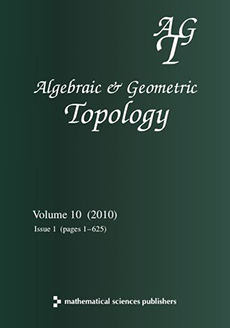Abstract
Let be a –manifold whose boundary consists of tori. The computer program SnapPea, created by Jeff Weeks, can approximate whether or not is a complete hyperbolic manifold. However, until now, there has been no way to determine from this approximation if is truly hyperbolic and complete. This paper provides a method for proving that a manifold has a complete hyperbolic structure based on the approximations of Snap, a program that includes the functionality of SnapPea plus other features. The approximation is done by triangulating , identifying consistency and completeness equations as described by Neumann and Zagier [Topology 24 (1985) 307–332] and Benedetti and Petronio [Lectures on hyperbolic geometry, Universitext, Springer, Berlin (1992)] with respect to this triangulation, and then, according to Weeks ["Handbook of Knot Theory", Elsevier, Amsterdam (2005) 461–480], trying to solve the system of equations using Newton’s Method. This produces an approximate, not actual solution. The method here uses the Kantorovich Theorem to prove that an actual solution exists, thereby assuring that the manifold has a complete hyperbolic structure. Using this, we can definitively prove that every manifold in the SnapPea cusped census has a complete hyperbolic structure.
Citation
Harriet Moser. "Proving a manifold to be hyperbolic once it has been approximated to be so." Algebr. Geom. Topol. 9 (1) 103 - 133, 2009. https://doi.org/10.2140/agt.2009.9.103
Information





